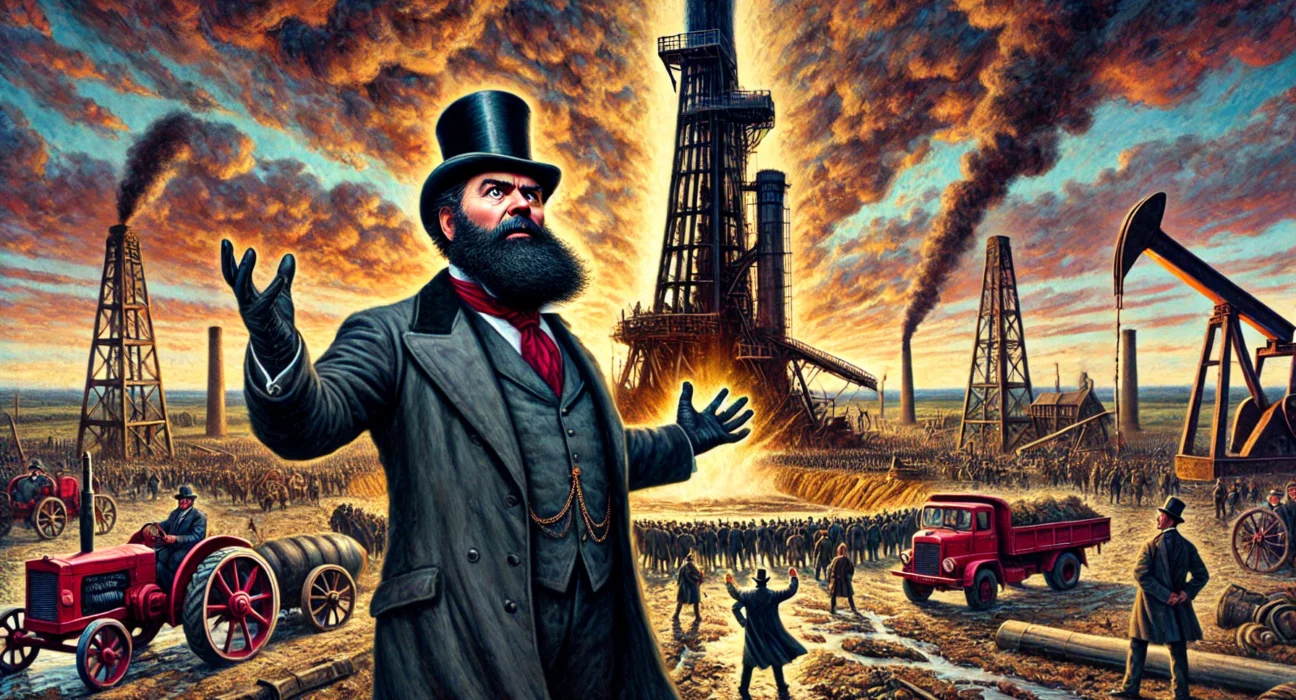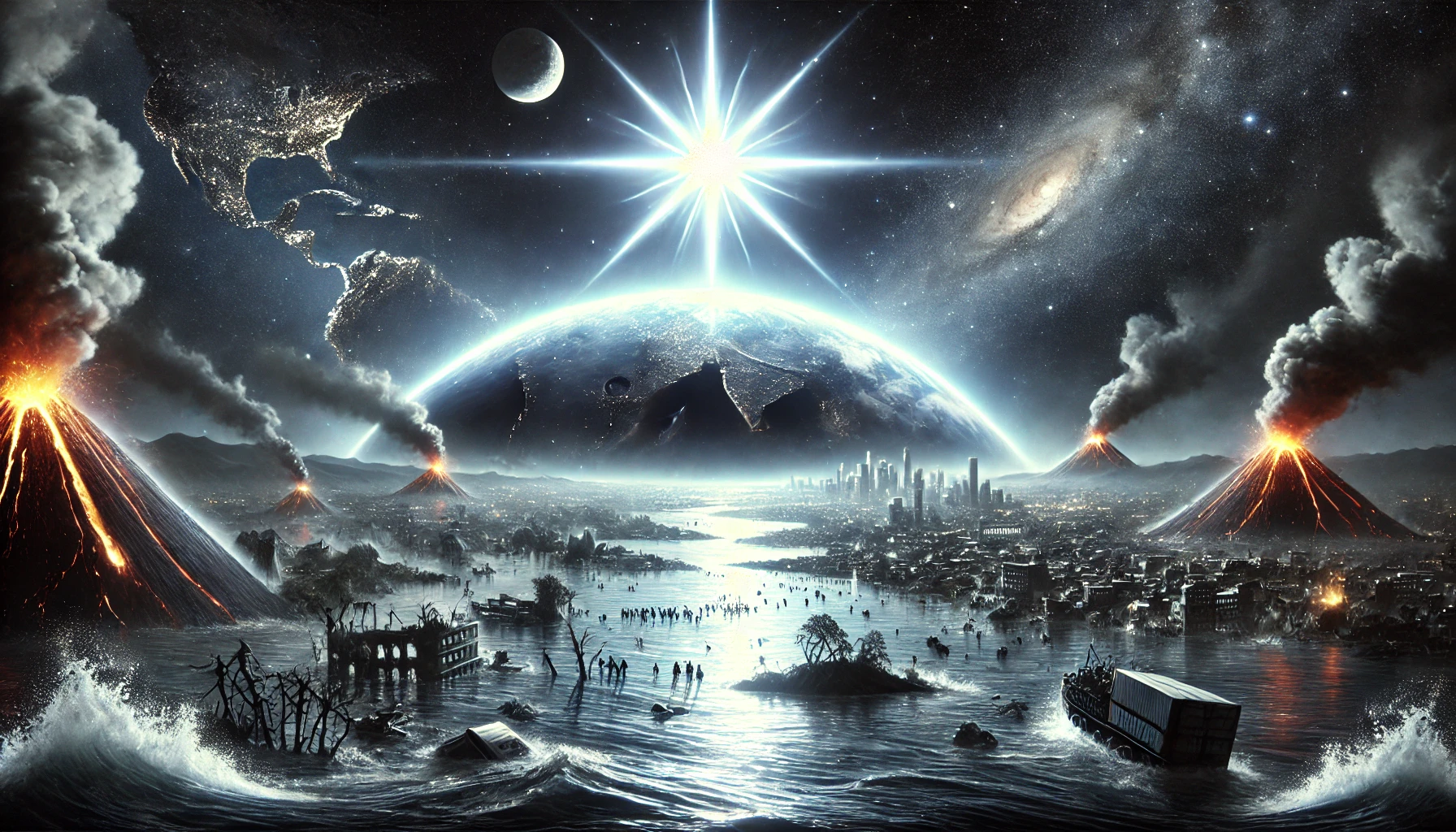When the World Screamed by Sir Arthur Conan Doyle is a short science fiction story first published in 1929. The tale is part of the Professor Challenger series and showcases Doyle’s fascination with scientific exploration and audacious ideas. This story features the eccentric and brilliant Professor Challenger, who embarks on one of his boldest experiments yet: attempting to communicate with the Earth, which he believes is a living organism.
Plot Summary
In the quiet depths of scientific exploration, Professor George Edward Challenger conceived an extraordinary theory, one that eclipsed even his most daring discoveries. He had come to believe that the Earth itself was a living, breathing organism. Not metaphorically, but quite literally alive, with its own circulatory system, nervous impulses, and a consciousness that slumbered beneath the surface. His latest experiment aimed to prove it—and not just prove it, but make the Earth aware of the tiny creatures crawling upon it: humankind.
Challenger had amassed a considerable fortune from the estate of Betterton, an industrialist who left his wealth to be used in the interests of science. With this, Challenger acquired a desolate tract of land at Hengist Down in Sussex. It was here, at the foot of the chalk cliffs, that Challenger began his monumental task: drilling a shaft deep into the Earth’s crust. His goal was audacious. He intended to breach the planetary shell, much like one might pierce the skin of a living creature, to elicit a reaction from what he believed to be a sentient Earth.
To accomplish this, he enlisted the help of Peerless Jones, an expert in deep borings, whose skills would be needed to drill the final hole—what Challenger described as the “sting” that would awaken the Earth. Skeptical but intrigued, Jones reluctantly agreed, drawn by the professor’s overpowering personality and the promise of an unprecedented scientific endeavor. He arrived at Hengist Down, where he found the professor’s operation well underway. A model village of workers, bound by secrecy and overseen by armed guards and bloodhounds, had been constructed to carry out the excavation. The drilling had progressed far beyond what anyone thought possible. The shaft descended an astonishing eight miles into the planet’s surface, exposing layers of chalk, coal, and granite.
Despite the absurdity of Challenger’s theory, Jones couldn’t deny the sense of foreboding as he prepared his equipment. Challenger, confident in the success of his experiment, described the Earth as a giant sea urchin, with its flattened poles and round body. It was an idea that seemed more fitting for a madman than for a scientist of Challenger’s reputation, yet the professor spoke with such certainty that even the most doubtful listener was forced to wonder if there was a grain of truth behind his radical claims.
As the final preparations were made, Challenger’s anticipation grew. He announced to his chosen audience—a select group of scientists, engineers, and even members of the Royal Family—that they were about to witness the greatest scientific breakthrough in human history. The shaft had been drilled, and now it was time for the final act: Jones would use his specially designed drill, powered by an electric motor, to pierce the Earth’s sensitive outer layer. Once the drill reached the proper depth, Challenger would activate the mechanism to provoke the reaction he sought.
The day of the experiment arrived under the clear skies of late spring. Spectators gathered on the hills overlooking Hengist Down, including journalists eager to document whatever spectacle was to unfold. Challenger, resplendent in his formal attire, stood at the center of the activity, radiating authority and confidence. He addressed the crowd, warning them of the potential dangers, but his words dripped with certainty that no one could deny.
Malone, the ever-loyal journalist and chronicler of Challenger’s past adventures, accompanied Peerless Jones into the depths of the shaft. The descent into the Earth’s bowels was eerie, marked by the oppressive heat and the weight of the planet pressing in on all sides. The men passed layer upon layer of ancient rock, until finally they reached the bottom, where Challenger’s theory would be tested. The pit was covered by a tarpaulin, concealing what lay beneath. When the cover was pulled back, both men stared in shock. The surface beneath them was not solid rock as one might expect. Instead, it seemed to pulse and shift like living tissue, faint ripples passing across it in waves, as though responding to their presence.
Jones hesitated, gripped by the realization that Challenger’s outlandish claims might be true. The Earth beneath them wasn’t a cold, inert mass; it was alive. With a deep breath, Jones positioned the drill between two beams suspended above the pit. His hands trembled as he made the final adjustments, but there was no turning back now. The drill was set, and the mechanism triggered.
The world held its breath as Challenger pressed the electric button. In that instant, the drill pierced the Earth’s surface, sending a shiver through the ground. What happened next was beyond anyone’s wildest imaginings. The Earth responded. A low rumble grew beneath their feet, swelling into a terrifying roar that reverberated through the ground and air alike. It was a sound so overwhelming, so primal, that it seemed to shake the very core of existence. The scream of the Earth—anguished, furious, and full of incomprehensible power—echoed for miles. The great crowd of onlookers stood paralyzed, stunned by the force of the sound.
As the Earth screamed, chaos erupted. The ground around the shaft trembled violently, and from the depths, a black, viscous substance—thick like tar—erupted in a geyser, shooting hundreds of feet into the air. The noxious liquid splattered across the landscape, covering the horrified spectators in a foul-smelling, gelatinous ooze. The force of the eruption sent lift cages and machinery flying through the air, some landing miles away. The shockwave was felt far beyond Hengist Down, shaking buildings and rattling nerves across the southern coast of England.
Malone and Jones barely escaped with their lives, scrambling to the surface just in time to witness the closing act of Challenger’s audacious experiment. The ground around the shaft collapsed, sealing the hole as though the Earth, in its rage, sought to heal the wound Challenger had inflicted upon it. A great mound of debris piled up over the site, burying all evidence of the experiment deep below.
As the dust settled and the tremors subsided, the spectators slowly regained their composure. Eyes turned to Challenger, who stood, unscathed and triumphant, atop the hill. A murmur spread through the crowd, growing into a roar of admiration. Despite the devastation and chaos, Challenger had succeeded. He had done the impossible. He had made the Earth scream.
Main Characters
Professor George Edward Challenger – A larger-than-life, fiercely intelligent, and volatile character, Challenger is a visionary scientist with a powerful belief that the Earth itself is alive. His arrogance and disregard for conventional methods make him both formidable and eccentric, yet his brilliance often leads to groundbreaking discoveries.
Edward Malone – A journalist for the Gazette and long-time associate of Challenger, Malone is both fascinated and wary of the professor’s wild theories. His role as the grounded observer contrasts Challenger’s extreme views, adding a layer of skepticism to the narrative.
Peerless Jones – A specialist in Artesian borings, Jones is reluctantly drawn into Challenger’s latest venture. While initially skeptical of Challenger’s outlandish theory, he finds himself an integral part of the grand experiment.
Theme
Human Hubris and Scientific Exploration – The story examines mankind’s unquenchable thirst for knowledge and the potential consequences of meddling with forces beyond human understanding. Challenger’s daring experiment embodies the extremes of scientific curiosity and arrogance.
The Earth as a Living Organism – Central to the plot is Challenger’s belief that the Earth is a sentient, living being with a circulatory and nervous system akin to a gigantic organism. This theme taps into a larger debate about humanity’s relationship with nature and the idea of Earth having its own form of life.
Man vs. Nature – Throughout the narrative, there is an undercurrent of tension between human progress and the natural world. Challenger’s attempt to “wake” the Earth is a metaphor for mankind’s constant efforts to dominate and understand nature, with unpredictable and often disastrous consequences.
Writing Style and Tone
Doyle’s writing in When the World Screamed is bold and energetic, reflecting the grandeur and ambition of the story’s scientific premise. The narrative is driven by vivid descriptions of machinery, geology, and the subterranean world, lending a sense of realism to the fantastical concept. Challenger’s bombastic personality permeates the text, with the dialogue often reflecting his overbearing confidence and disdain for conventional thinking.
The tone is a blend of adventure, scientific curiosity, and subtle humor, especially through the interactions between the characters. Doyle often juxtaposes Challenger’s grandiosity with the skepticism of those around him, such as Malone and Jones. The story carries an air of suspense, particularly as Challenger’s experiment moves toward its climactic moment, keeping readers engaged in its unfolding drama.
We hope this summary has sparked your interest and would appreciate you following Celsius 233 on social media:
There’s a treasure trove of other fascinating book summaries waiting for you. Check out our collection of stories that inspire, thrill, and provoke thought, just like this one by checking out the Book Shelf or the Library
Remember, while our summaries capture the essence, they can never replace the full experience of reading the book. If this summary intrigued you, consider diving into the complete story – buy the book and immerse yourself in the author’s original work.
If you want to request a book summary, click here.
When Saurabh is not working/watching football/reading books/traveling, you can reach him via Twitter/X, LinkedIn, or Threads
Restart reading!








